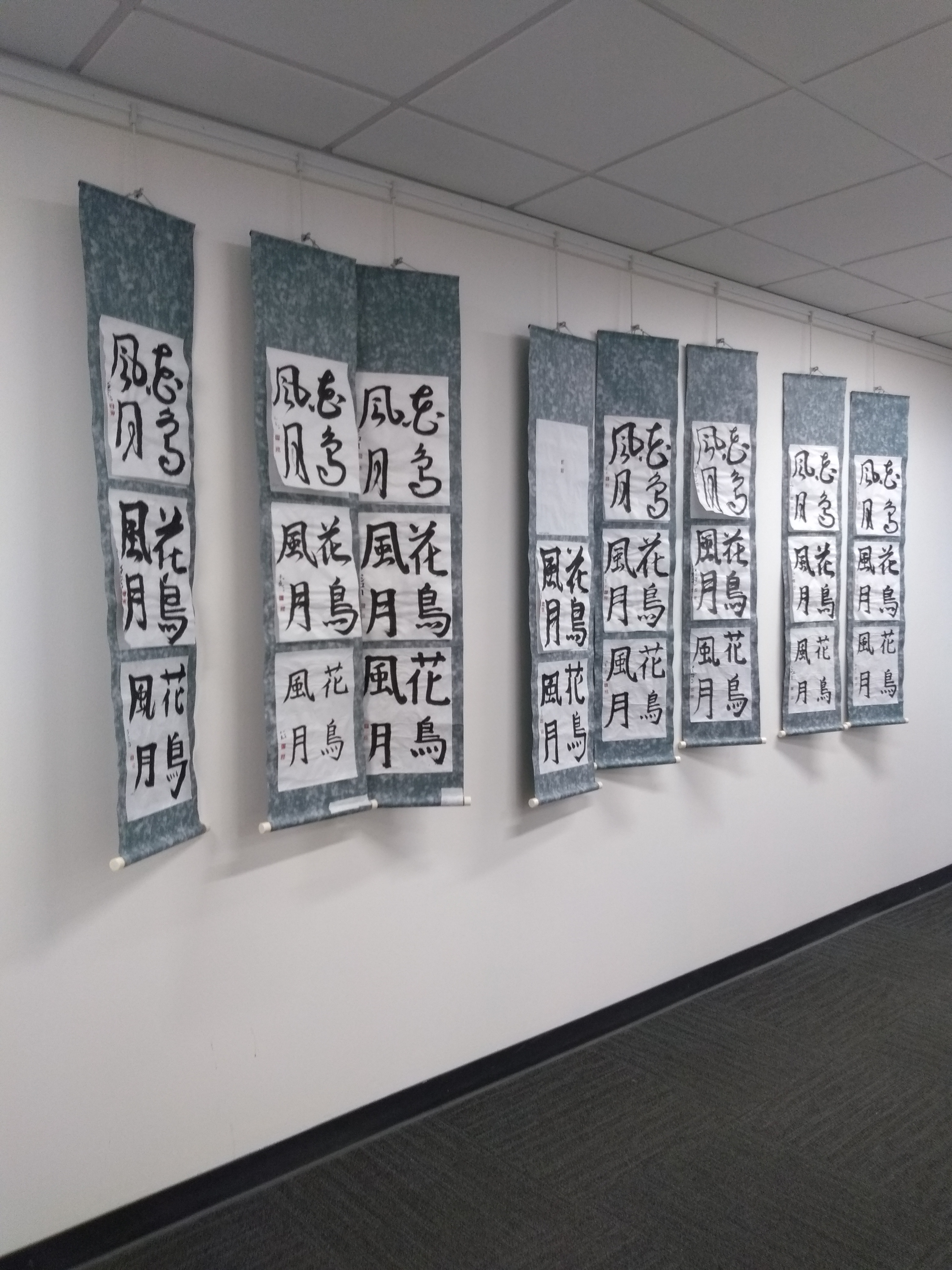Students from JPN 230: Poetry and Japanese Calligraphy Exhibit Their Work
 Co-taught by William Bridges (a scholar of Japanese literature) and Keiko Nishioka (a professionally-trained Japanese calligrapher), "Poetry and Japanese Calligraphy" focuses on the artistic practices of Japanese calligraphy and the poetic content of calligraphic art.
Co-taught by William Bridges (a scholar of Japanese literature) and Keiko Nishioka (a professionally-trained Japanese calligrapher), "Poetry and Japanese Calligraphy" focuses on the artistic practices of Japanese calligraphy and the poetic content of calligraphic art.
These scrolls include three pieces of Japanese calligraphic art. The paper at the top of the scroll features two seals, orhanko, which serve as a kind of signature. Each work of Japanese calligraphy has two seals: a hakubun and a shubun. The hakubun, or white stamp, is an engraved image or Chinese character. This stamp represents the artist's first name. The shubun, or scarlet stamp, features a character or image in relief. When stamped, the character or image in relief takes on the scarlet color of the stamp ink. This seal represents the artist's pen name. The stamps are always used in tandem; in Chinese calligraphy, the two are referred to as "yin" and "yang" seals. Each seal in this collection was made by students in the class, who carved images into soft stones.
The sheets in the middle and on the bottom of the scroll are works of Japanese calligraphy completed by students in Japanese 230. The pieces featured here are soot ink--which was ground by students from an inkstone--on rice paper. The image in the middle means "moonlight." The calligraphy on the bottom is a four-character idiom: "flowers, birds, wind, and moon," a synecdoche for natural beauty. Both pieces of calligraphy are in the kaisho, or standard, style. The "ABCs" of Japanese calligraphy, the kaisho style is characterized by sharp lines and the steady, slow rhythm of its strokes.
The scrolls are displayed in the hallway outside the Art & Music Library.
